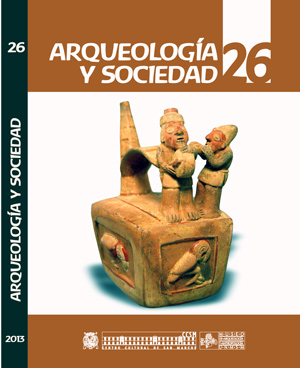THE HOLY MOUNTAIN SALKANTAY: LANDSCAPE, POWER AND ANCESTORS
DOI:
https://doi.org/10.15381/arqueolsoc.2013n26.e12396Keywords:
Mountain, sacred water, landscape, Salkantay, deity, powerful, veneration, Vilcabamba.Abstract
For the people of the Andes, the Apus reverence and sacred mountains, converted into local protectors, did not go unnoticed at the time, so, as the Salkantay mountains, including the surrounding ones, assume an important role into the Andean worldview. For example the Waqay Willke snowy peak (5720 m), within the traditional Andean symbolism of dualistic thinking, is considered the complement of Salkantay, that is one of the most powerful and active deities of the place, and it is appreciated by the people, the father of all the mountains in the region and even nowadays is held in great veneration, so Machupicchu and Choquechurco holds an intimate visual contact with the Salkantay and other snowy peaks of the Vilcabamba chain.Downloads
Published
Issue
Section
License
Copyright (c) 2013 Wilber Bolívar Yapura, Yony Dueñas Castillo

This work is licensed under a Creative Commons Attribution-NonCommercial-ShareAlike 4.0 International License.
THE AUTHORS RETAIN THEIR RIGHTS:
a. The authors retain their trademark and patent rights, and also on any process or procedure described in the article.
b. The authors retain the right to share, copy, distribute, perform and publicly communicate the article published in the Arqueología y Sociedad (for example, place it in an institutional repository or publish it in a book), with an acknowledgment of its initial publication in the Arqueología y Sociedad.
c. The authors retain the right to make a subsequent publication of their work, to use the article or any part of it (for example: a compilation of their works, notes for conferences, thesis, or for a book), provided that they indicate the source. of publication (authors of the work, journal, volume, number and date).
















